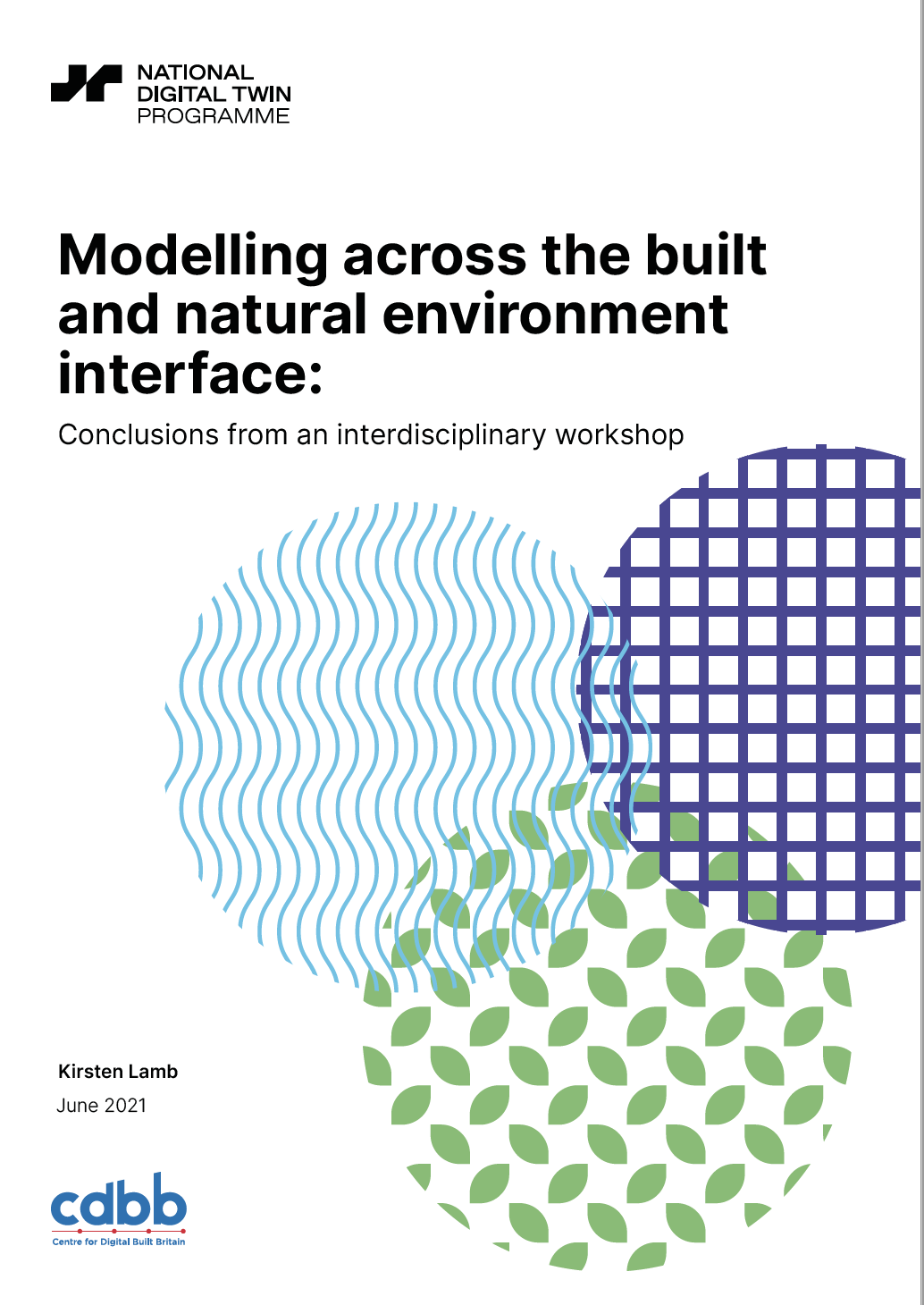
Submitted by Angela Walters on Thu, 17/06/2021 - 16:54
Cross-discipline collaboration, cultural barriers and compelling questions.
Better data can help us understand the complex interactions between the urban systems we create and the natural systems in which they operate. Such an understanding would underpin our ability to meet important environmental targets such as Net Zero carbon emissions, and the government’s commitment to embedding support for biodiversity in its economic decisions as a response to the Dasgupta Review. Collecting, sharing and managing information thoughtfully across the built and natural environment disciplines is critical to achieving these goals.
The recommendations stemmed from a workshop in which researchers and experts from the world of built environment digital twins met with counterparts in landscape decision-making. The Landscape Decisions Programme, part of the UKRI Strategic Priorities Fund, addresses the challenge of delivering evidence-based decisions within UK landscapes through research collaboration with policy, business and land management partners.
The programme calls for the move towards an interdisciplinary decision-making framework to better inform the way land is used. While environmental processes and ecosystems are already well-monitored and modelled by data, the frameworks and processes by which this data is made available as insight to decision-makers are still being explored.
Speaking with peers in built environment modelling during the workshop, I was struck by how many similar barriers and challenges we face to integrated modelling, and how much we can learn from each other. We agreed that better data and better processes for decision making could lead to huge opportunities to identify trade-offs, opportunities and risks in making choices that lead to better outcomes for society and nature.
We also agreed that while data quality, interoperability and security are vital to this effort, we will only overcome technical barriers through collaboration and communication with people beyond our familiar disciplines. In short, we need to get better at collaborating with people who aren’t like us, who have different expertise and experience.
As an initial step, we need to start forming interdisciplinary awareness and understanding. In the discussions happening in the Landscape Decisions community, I find researchers very often face different constructed realities in different disciplines. For example, while researchers from other disciplines may feel optimistic about the path to Net Zero, researchers like me from urban studies may perceive the challenges quite differently when looking at the urban sprawl reality.
Even though researchers from different disciplines agree on the necessity for cross-discipline understanding of the complex systems we study, it’s common for us to continue with the norm of our specific fields, rather than bridging the disciplinary gap. By working in interdisciplinary collaborations, researchers have a better opportunity to realise conflicting policies and develop more integrated methods that enable us to reach the shared goal of making sustainability-led decisions about the world around us.
Another key first step we identified in the workshop was the need to bring people together to discuss common goals and ask compelling questions of data, whilst creating a platform for interdisciplinary collaboration around built and natural models. If we are able to integrate these models in something like a National Digital Twin, we can expect to reap vital opportunities to produce better outcomes from decisions about land and buildings. Ultimately, overcoming these cultural barriers to interdisciplinary work is a priority in helping us to achieve our common goal.
If you’d like to find out more about the set of recommendations that were developed, you can read the full workshop report online here.
About the Author: Dr Jingyan Yu is a Research Fellow in urban analytics at the Department of Civil and Environmental Engineering, University of Surrey. She is also a member of the NERC Landscape Decisions programme and a participant in the Hub’s recent interdisciplinary workshop with built and natural environment modelling experts. Jingyan is interested in understanding cities and complex urban systems through urban modelling and simulation, geospatial information analysis, mainly using Python. Currently she is working on modelling urban growth modes and urban green space usage.


